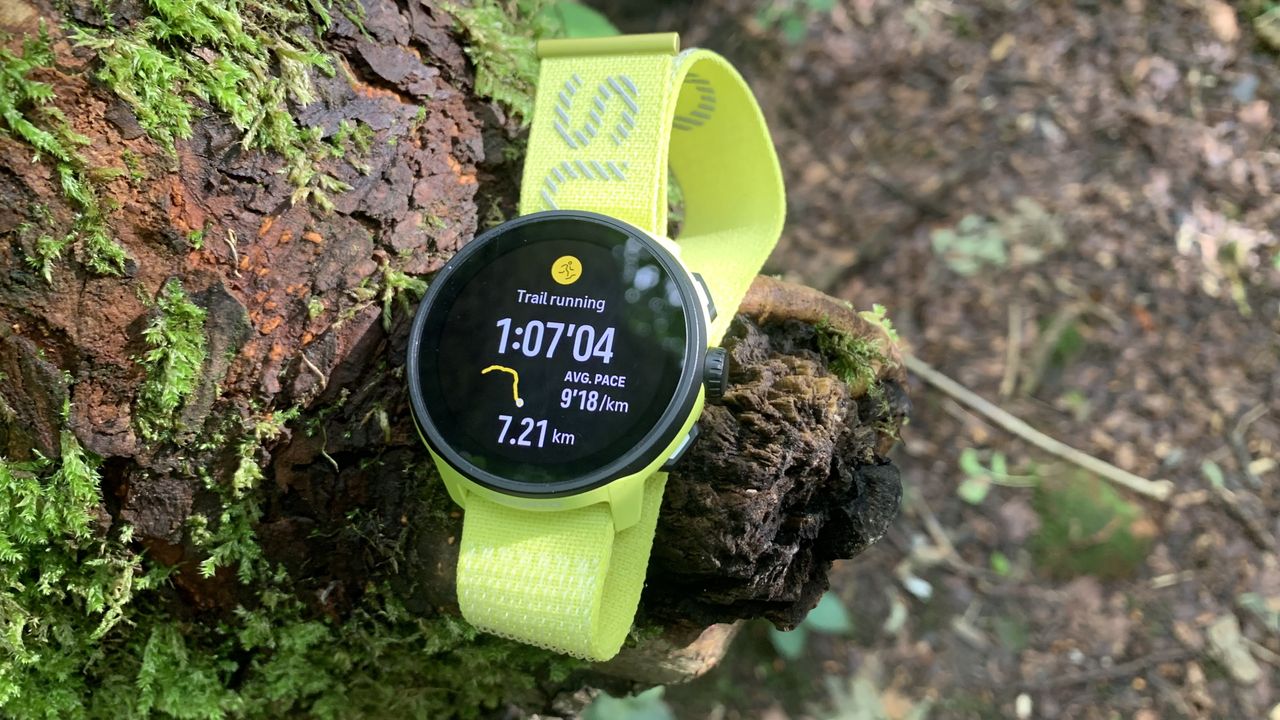
The Suunto Run: first impressions
The Suunto Run is the Finnish brand's first GPS watch aimed exclusively at runners, and its first watch priced at under $250. In a nutshell, that means it's largely stripped away features that aren't necessary for runners, and focused on a watch that's lightweight, low profile, has music storage and provides great metrics and tracking across different types of running, such as trail, track, and treadmill plus a dedicated marathon mode. It also has plenty of other activity modes that runners might use as cross training, such as yoga, swimming and cycling, and even a few unrelated ones, like climbing and orienteering.
Despite its more budget-friendly price tag, the Run boasts a bright AMOLED display that you can view easily in any conditions, though it has simple line and pointer navigation rather than proper maps, which may be a downside for trail runners. It's got a super accurate GPS and heart rate monitor, with the Suunto app providing you with more data than you could ever need.
With a 1.8in (46mm) case, it's around the same size as the Suunto Race S with a low profile design, and it's lighter than many other watches we've tested. The nylon strap secures with hook-and-loop fastenings, and it's one of the most comfortable and secure designs we've tried.
• List price: $249 / £199
• Case sizes: 1.81in / 46mm
• Display: AMOLED
• Weight: 1.27oz / 36g
• Battery life (advertised): Up to 20 hours in performance mode (up to 40 hours in Power Saving mode) / up to 12 days with regular use
• Battery life (actual): Less than a week with typical use
• Water resistance: 164ft / 50m
• Materials: Stainless steel bezel, Gorilla glass lens, fiber-reinforced polyamide case, nylon strap
• Best use: Trail running, hiking, swimming, cycling
The Run is operated with three buttons: a digital crown that takes you straight into the different sports modes if you press it, and can also be used to scroll through what Suunto calls your Widgets: control panel, heart rate, step count, sleep tracking and more. There's a Back button and a button that takes you directly into your most recent sports mode if pressed from the home screen. It's all slightly less confusing than the Race, where we always felt like no matter what we pressed, we ended up in the same place, and the buttons all work well.
You can also control the Run via the touchscreen, swiping up or down to access the Control Panel, and left to get right into sports modes, and it's all very responsive, though a bit surprising that you can't turn the touchscreen off.
On the features front, the Run is packed with all the cutting-edge training tools you'd expect, and it almost seems redundant to mention anymore, but just in case we need to, you'll find heart rate monitoring and GPS, a pulse oximeter, barometric altimeter, sleep tracking and recovery predictions. The homescreen can be tailored to show your current altitude, heart rate, calories burned, or whatever it is you want to keep an eye on.
Once you get out on the trail, the GPS is truly pristine, as is the heart rate tracking, and if you're running, you can train by duration, distance, calories burned or ascent. Interestingly, the Run advertises Sunnto's Ghost Runner mode, where a virtual pacer runs just ahead of you, but the watch we were sent to test seemed to be missing this feature, with no obvious way to download it.
When you get home from a run, one of the most glorious things about the Suunto app is that you'll be able to watch a digital flyover of your route on the 3D topo map so you can force the details of your run upon your friends and family endlessly.
The battery life definitely didn't seem to hold up to claims. With regular usage, meaning used most days for a run, hike or swim, we found we didn't even get a week out of a single charge (more like five days), and while that will sound like a lot to some Garmin users, it's nothing compared models like the Coros Pace 3 which lasts for weeks. As the battery drains, the watch becomes less responsive, which makes it difficult (or at least annoying) to get real-time data when you're out on the trail.
Because it's designed to be light and running-focused, it's not a full smartwatch, but you can read messages and receive call alerts, and even control music playback.
In total, the Run has 34 different sports modes, including water sports, and while it's not a dive watch, it is waterproof for swimmers. There's no LED flashlight, which at this price point should be obvious, but there is a bright white screen, which does provide a little illumination, if not enough to ditch your headlamp in winter.
Like every GPS watch on the planet, to access the entirety of metrics available, you need to wear this watch night and day so it can gather as much data as possible, and this one was fairly comfortable to wear for a few nights of testing. We especially appreciated how easy it is to turn on sleep mode so it doesn't wake everyone up with an unnecessary flashing green heart rate monitor.
The Run has accomplished some of its goals in that it's light, comfortable, affordable, and has some good running tools, and the AMOLED screen certainly ranks it higher than some budget watches, but it also falls short on battery life, maps and some promised features that seem to be missing. It's a good start and a good price, but if you're not too tied to the bright screen, you can probably find a better watch in the same price range.
Suunto Run: in the field
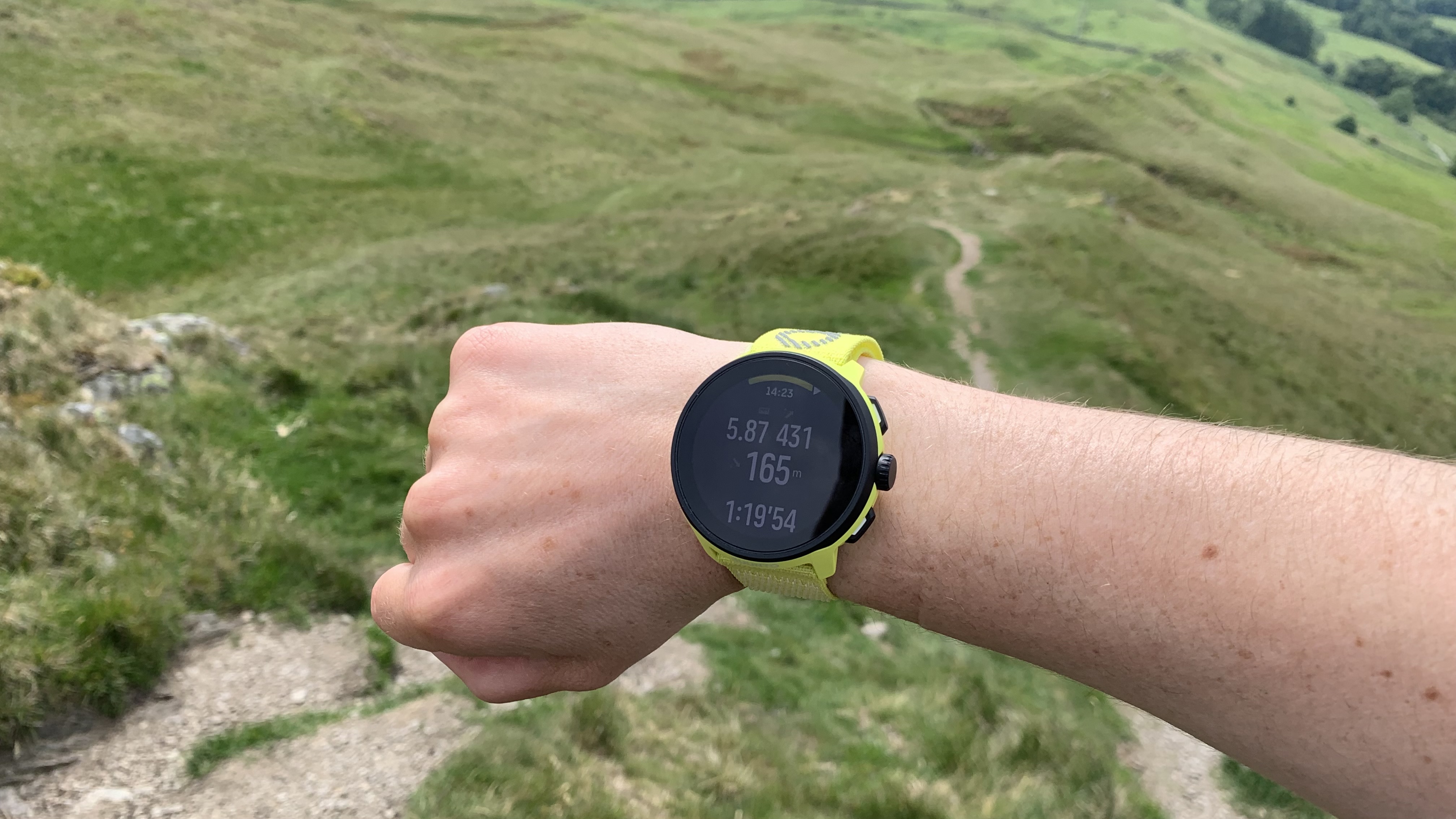
I've been testing the Suunto Run for most of the summer, which means I've had it out here on the trails of Scotland, in the Lake District and in Verbier in the Swiss Alps. I've used it for hikes, yoga, and pool swimming as well as trail running, but here I'll mostly focus on how it performed for running.
I've been wearing it on my right wrist and my Coros Pace 3 on my left wrist to see how the two compare in terms of metrics.
Here’s how it performed:
Design
Being a lower-priced and lighter model, the Run is mostly made of plastic, but it does have a stainless steel bezel, and in general, it seems to be of good quality and robust build.
I tested the bright and fun Sonic Lime colorway, which came with two different-sized wrist straps (S/M and ML). The straps were a bit fiddly to put on, but the smaller size is perfect for my wrist, and I was really pleased with how comfortable and secure it feels.
It's secured by hook-and-loop fastenings, and it never budges once it's on. It's a little bigger than my Coros, and even the Suunto Race S, but it's relatively low profile, which means it's not annoying and doesn't make it difficult to get my clothes or backpack on when I'm wearing it. It also meant I could wear it overnight for a few nights, which I sometimes find impossible with bulkier watches.
The AMOLED screen does what it says on the tin and is easy to see whether I'm running in brilliant sunshine, overcast conditions or a downpour.
The Run looks like most watches I've tested, with three buttons on the right side of the case, and Suunto has simplified the buttons presumably after so much feedback about them being complicated in models like the Race, so it all became pretty instinctive pretty quickly. The placement of the digital crown button does mean that sometimes my wrist accidentally presses it when I'm doing a plank (an occupational hazard as a yoga teacher), but if you don't love plank as much as I do, this won't present much of an issue.
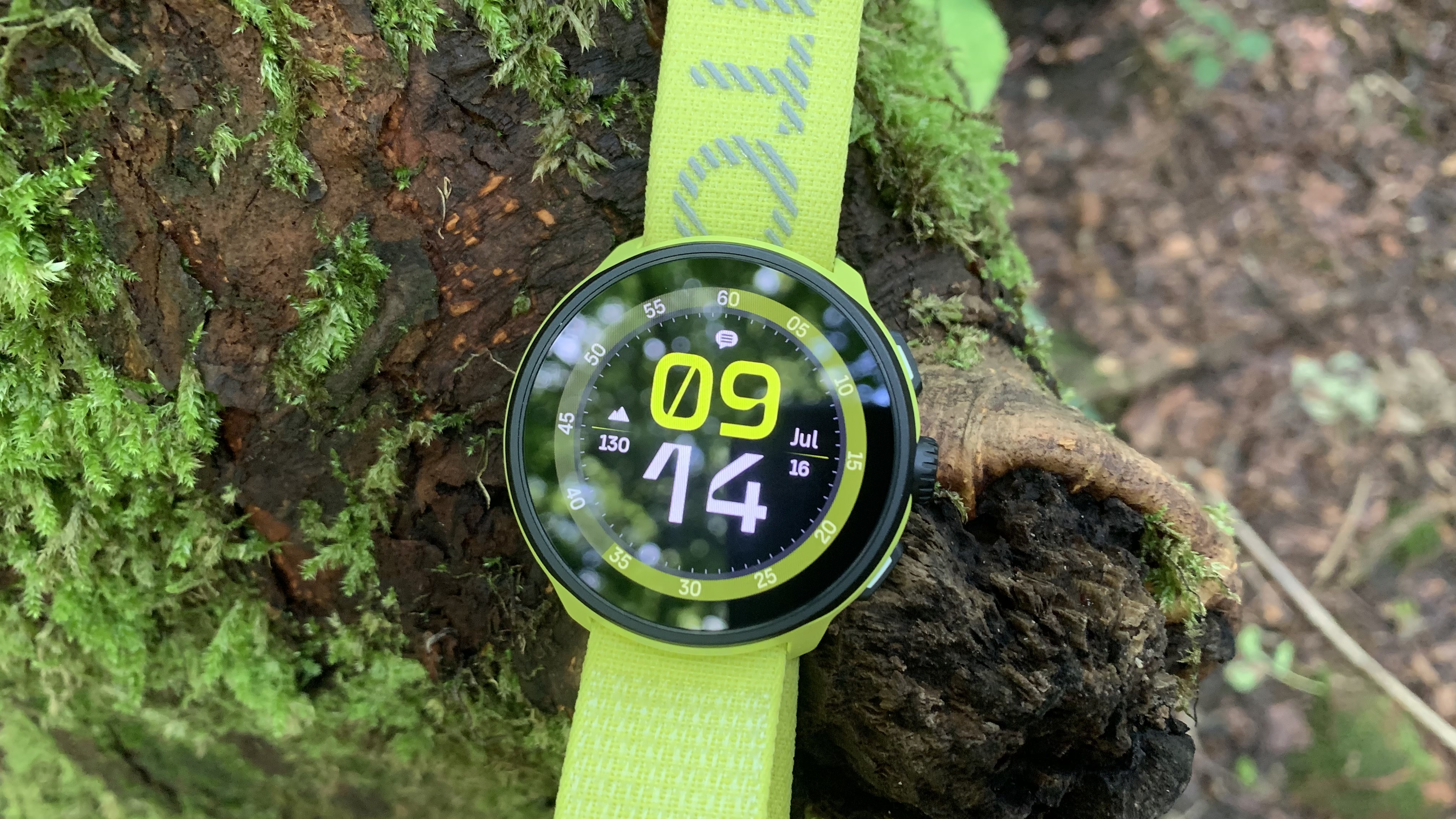
Features
Suunto bills this watch as being geared towards runners, and in a sense that's true, since it's the first to have a track running mode, but I think the sports tracking features and metrics are largely the ones we've all come to expect from a sports watch, like heart rate, sleep, and blood oxygen. I found the heart rate tracking to be extremely precise and especially during pool swimming.
In addition to the new track running mode, there's a marathon mode and interval training, which I think is fairly standard, but useful. One feature I was excited to test out was Ghost Runner, or a virtual pacer, but I couldn't find it anywhere on the watch, even after reading online guides. In the end, I asked my contact at Suunto and received a video showing me where to find out, and it turns out I'm not technologically challenged; it just isn't there. As I'm writing, they're looking into it to see what might have gone wrong, and I'll update this if there turns out to be a solution, but my investigations have at least revealed that SuuntoPlus doesn't work on the Run, so it may be that's why.
Several times, I've downloaded a GPX file from AllTrails and sent it to my Run, which was a painless procedure. This watch doesn't have proper maps like the Race, but it means I can use breadcrumb navigation. I'm really pleased with the accuracy of it, but I can't help but think that trail runners seeking a run-specific watch would probably prefer maps.
The Suunto Run is the first watch from the brand to offer music storage, I guess because they assume most runners want to listen to music. I don't listen to music on the trail, so I didn't use this function, though it seems as though you drag the mp3 files over onto your computer, which somehow seems outlandishly outdated since most people stream music rather than download it these days. In theory, it would mean a road runner could ditch the phone and download a playlist or podcast and control music from the watch, but for those of us heading out on the trails, it seems prudent to bring the phone along for safety.
This is a training watch, so don't expect lots of smartwatch features, but you can read text messages, which I find handy on the trail, and check the weather forecast.
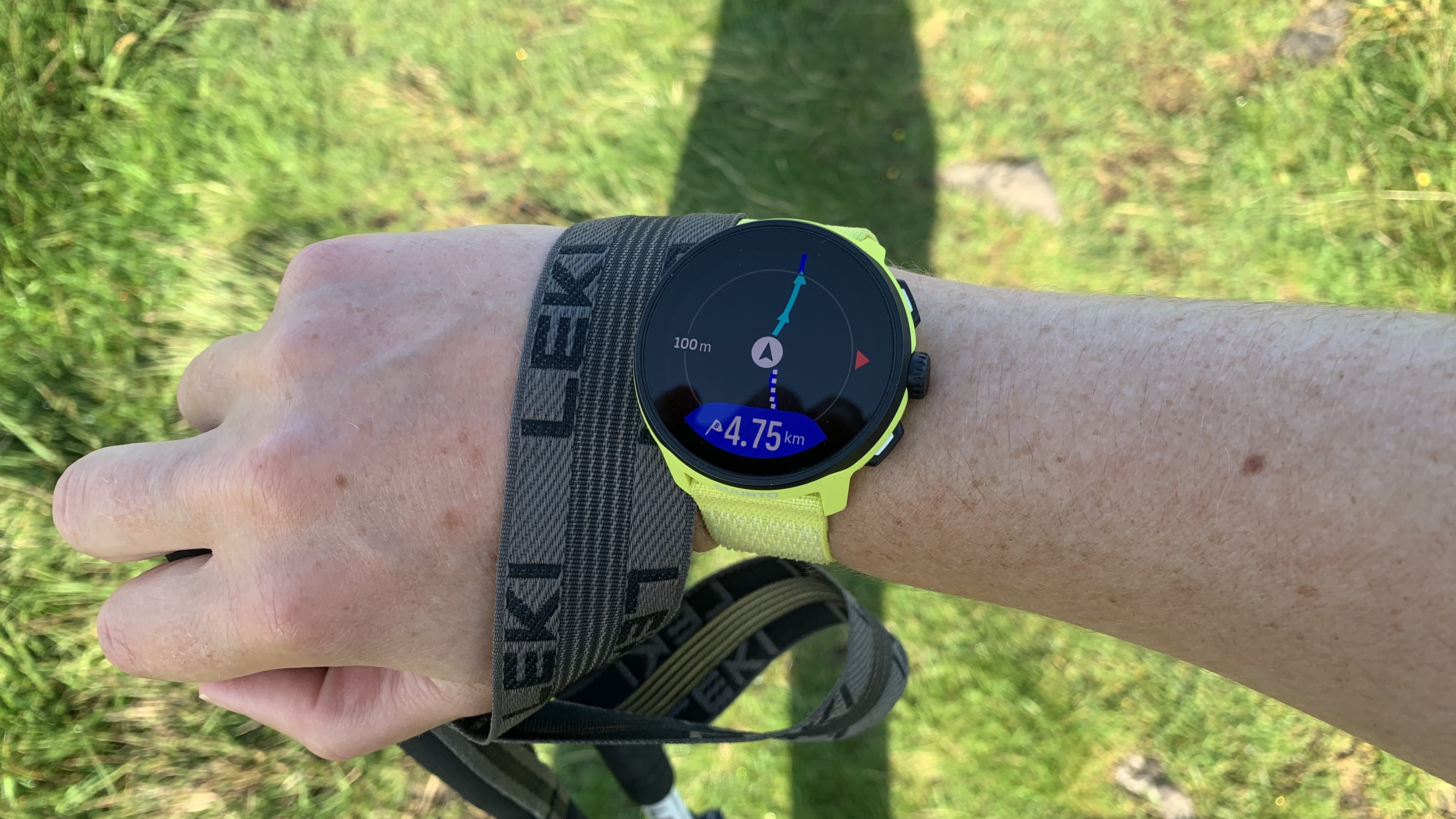
Performance
This watch is much more intuitive than the Race S and I had no problem just getting out on the trail with it from day one. It's easy to navigate and on the trail, I find the GPS to be brilliantly accurate.
It's super responsive until it's not, which means that as the battery starts to drain, nothing happens when I lift my wrist, and I find that annoying on the trail if I want to see how far I've gone or how long I've been out for.
As for the battery, that's probably my biggest gripe about this watch, since I don't think it's nearly as good as advertised. I took it with me on a trip to the Alps and wore it for a trail run on the first day followed by two days of hiking. It died on day three, which is under the 20 hours of GPS mode, and I had to charge it again for my final day of running. In normal use, meaning that most days I do a run, hike, swim or yoga class, I get maybe five days of use out of it. Compared to some watches, that's quite good, but it doesn't even touch my Coros Pace 3, and means for active trips you'll need to bring the charger.
The Run is charged by a charging cradle, and that's another area that needs refinement, as it's a bit fiddly to get the watch on the cradle and easy for it to slip off. Once it's on, it does charge quickly.
While the GPS and heart rate monitor are really precise, I did find some flaws with sleep tracking and step count. I wore this for the requisite three nights of sleep, and on one night I definitely got up to go to the toilet and my watch showed no signs of having noticed, which is a bit alarming. I've also had the experience where I've been sitting for a while and got up to do something, then 10 minutes after I've sat back down, I get an alert telling me I've been sitting too long. I don't pay much attention to step count generally, but it's clear to me that it's missing some motion.
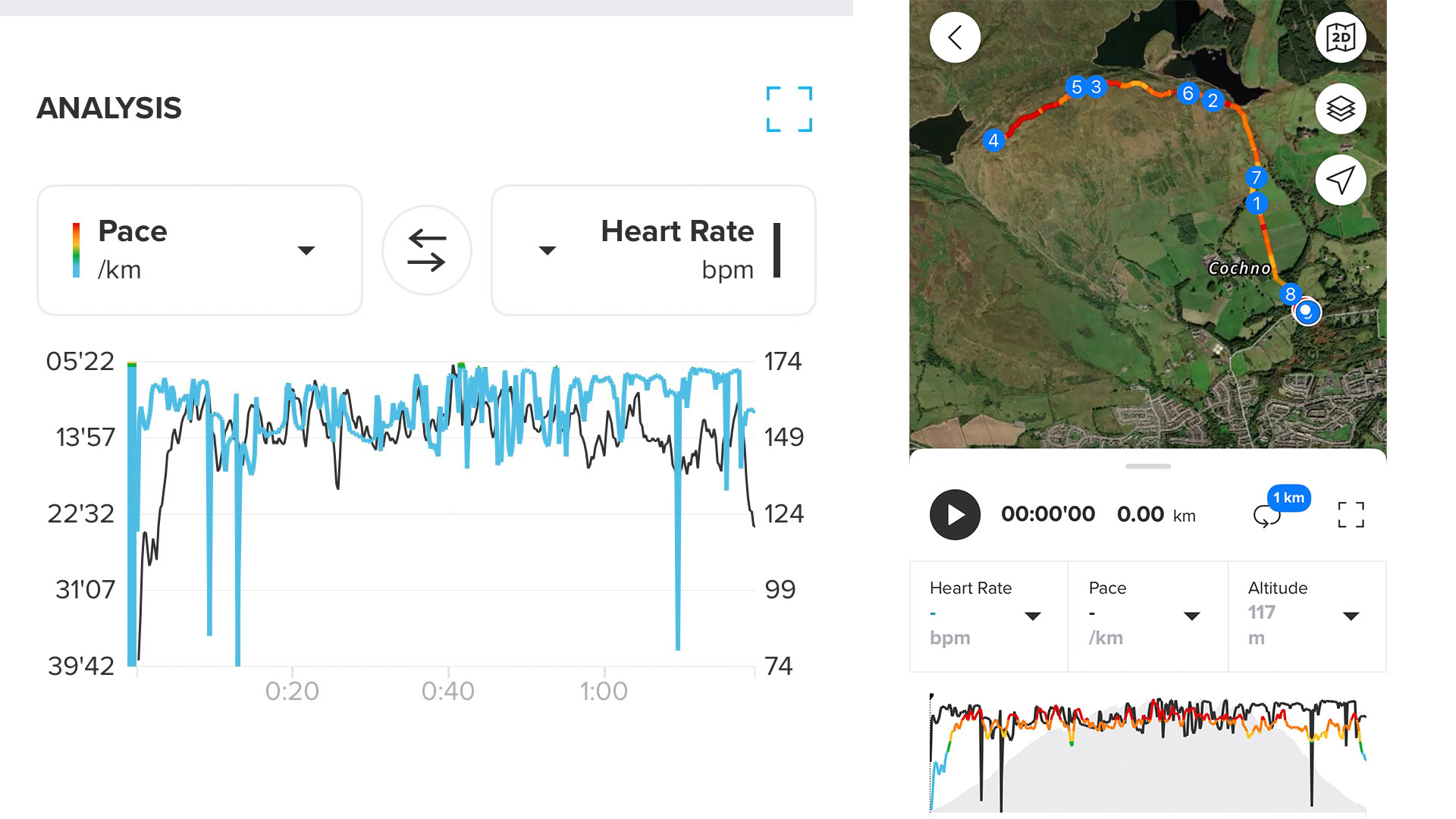
Value
At $249 / £199 the Suunto Run is definitely friendlier on the wallet than previous efforts from the brand, and that's a good price for the AMOLED screen and access to Suunto's amazing training data. However, it's noticeably lacking in some features you can get for $100 more in the Race S and even if it doesn't look as fancy, I think the Coros Pace 3 is overall a better watch for a cheaper price.
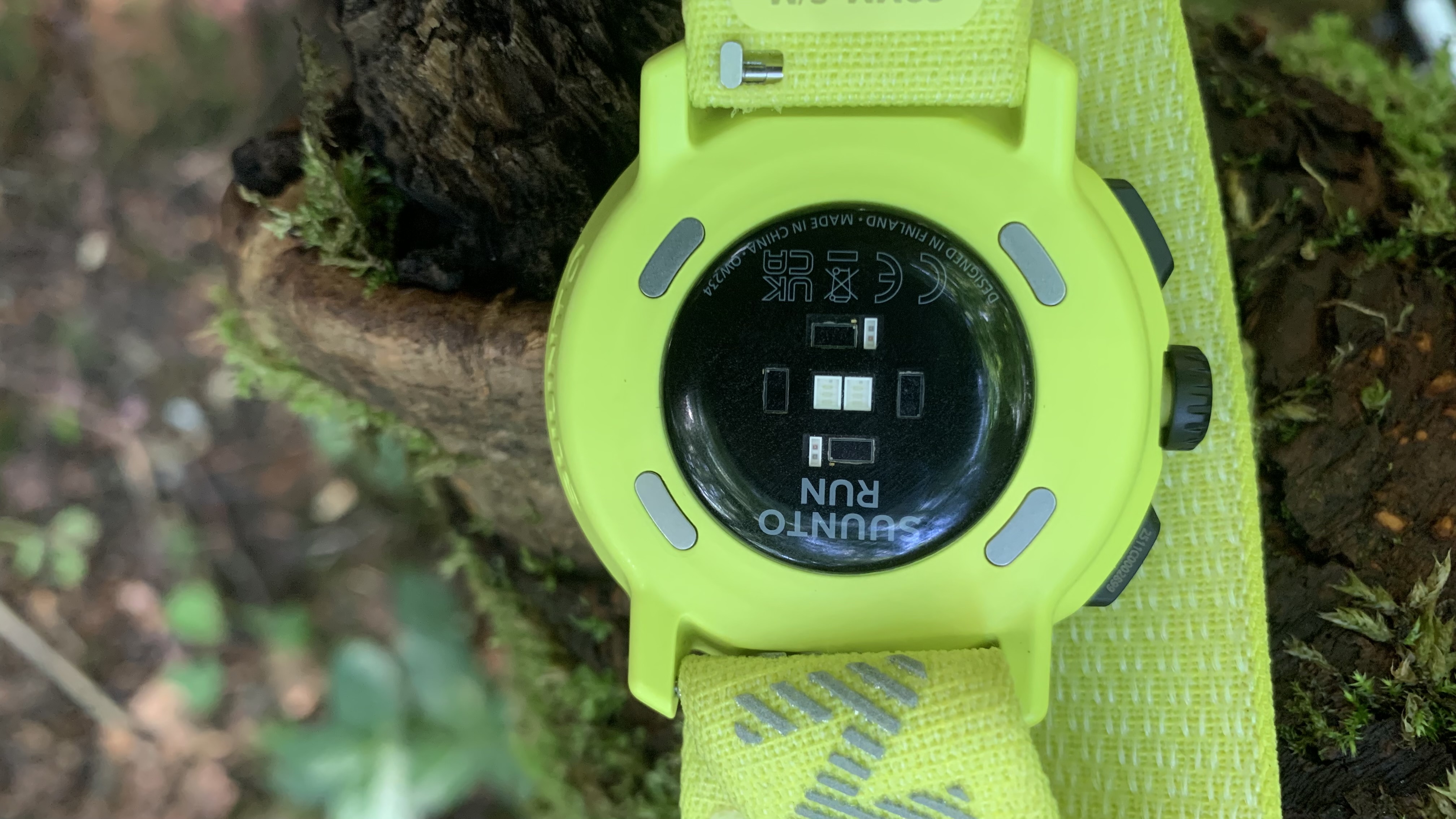
Also consider
The Coros Pace 3 is intuitive, super light, comfortable and offers all the training tools you could want from a watch. It lacks the bright AMOLED screen but has oodles of battery life, which might make up for it, depending on how you want to use your watch. It offers the same breadcrumb navigation as the Run and comes at an even nicer price.
Read our full Coros Pace 3 review.
Pros
- Impressive battery life
- Straightforward to use
- Great metrics
- Lightweight and comfortable
- Stays put when you’re on the go
- Low profile design
- Waterproof
Cons
- Lacks smartwatch features beyond message preview
- Looks a little cheap
- Screen can be a little hard to read on sunny days
If you're keen on the Suunto brand and want a small watch, I think it's worth checking out the Suunto Race S. This is similar in dimensions to the Run, though a little heavier, and yes, it costs more, but it offers much more too, such as proper maps and a better battery life.
Pros
- Extremely accurate GPS
- Excellent battery life
- Proper offline maps
- Great training insights
- Super clear and bright display (easy to see in all conditions)
- High-quality build
- Responsive touchscreen
- Comfortable strap with innovative clip
- Reasonably priced (especially with AMOLED display)
Cons
- Takes a little while to get to grips with interface and maps
- Lacks proper flashlight
- High profile design not the best for sleeping
- Crown button a little fiddly
Comparison table
Watch |
Suunto Run |
Coros Pace 3 |
Suunto Race S |
|---|---|---|---|
Price |
$249 / £199 |
$229 / £219 |
$349 / £325 (stainless steel), 449 / £425 (titanium) |
Weight |
1.27oz / 36g |
1oz / 30g |
1.76oz / 50g (titanium) |
Display |
AMOLED |
memory-in-pixel |
AMOLED |
Sizes available |
1.81in / 46mm |
1.61in / 42mm |
1.77in / 45mm |
Best use |
Trail running, hiking, swimming, cycling |
Trail running, hiking, swimming, cycling |
Trail running, hiking, swimming, cycling |







